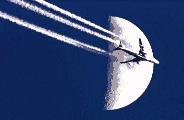- Home
- Propulsion
- PV-50 Propeller
Contrails ! Anatomy of a prop blade
Beyond appearances
Some homebuilders would like to learn more about composite prop blade construction.
The mishap of a British MCR boy gives us the opportunity to take a closer look at an Arplast PV-50 propeller blade.
The Arplast PV-50 propeller
Specs
The PV-50 propellers are manufactured by Arplast SA.
They are two or three-blade variable pitch propellers, suitable for geared engines (understand "Rotax engines" ;-)
PV-50 electric variable pitch props equipped the early production 912-powered MCR-01, with blades developed by Michel Colomban, of Cri-Cri and MC-100 Ban-bi fame.
PV-50 with different blades are now found on light aircraft and some Belgian and British MCR-01 ultralight versions.
Observations (click on pictures to enlarge)
The blade reached the F-PHIF hangar through a time-space vortex.
It was cut into sections with a hacksaw by Igor and Nicolas.
- The un-cut blade. We can see that despite the violent ground strike, it is not heavily damaged.
The blade shank construction is clearly visible. It was sawn off the propeller hub. - The blade cut into sections.
The result of friction with ground on the prop tip red paint is clearly visible. Note that the white paint was not stripped. - #1 & #2 sections : The airfoil-shape of the blade shank is clearly discernable. Prop efficiency and airflow near the hub (engine cooling) are enhanced.
- #2 section : Blade fabrication seems to include numerous carbon rods.
No bubbles or pockets in the resin filling.
One can see the lightening cavity in the blade portion nearest to the hub. - #3 section : The airfoil can be clearly seen. It is not the ubiquitous Clark Y with flat blade face.
In the #1 section, the plastic foam molding core can be made out.
In the foreground, the #2 section. - #4 section : See the slenderness of the airfoil, and the concave blade face.
- #5 section
- Left to right, #6, #4 & #5 sections .
 E-mail me
E-mail me



 Arplast website
Arplast website









